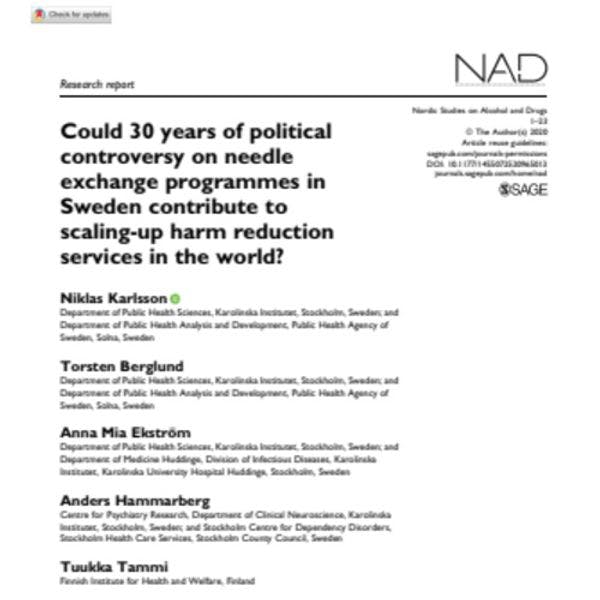Nordic Studies on Alcohol and Drugs
¿Pueden 30 años de controversia política sobre programas de intercambio de jeringas en Suecia contribuir a ampliar los servicios para reducción de daños en el mundo?
Niklas Karlsson et al. sugieren que retrasos en la adopción y expansión de servicios para reducción de daños en Suecia podrían informar las experiencias de otros países hacia la implementación de servicios. Más información, en inglés, está disponible abajo.
By Niklas Karlsson et al. / Nordic Studies on Alcohol and Drugs
The World Health Organization (WHO) and the Joint United Nations Programme on HIV/AIDS (UNAIDS) have set ambitious goals to end the hepatitis B, C (HBV, HCV) and AIDS epidemics in the world by 2030, targeting people who inject drugs (PWID) as a specific risk group. PWID using illegal drugs are partly hidden in society due to laws and societal and legal discrimination, and are considered a hard-to-reach group. PWID are also heavily affected by blood-borne viruses (BBV) such as HBV, HCV and HIV, which primarily spread via sharing of nonsterile injection equipment.
To reach PWID and prevent BBV transmission, many countries have introduced harm reduction services such as evidence-based needle exchange programs (NEP), though not without political or societal controversy. The goal of NEP is to reduce harm and BBV transmission, while accepting continued injection drug use (IDU) in some contexts perceived as creating unclear boundaries with, e.g., social services support, the police, politics, policy decision-making and local communities supposed to harbour these programmes.
Estimations suggest IDU is present in 179 of 206 countries with 93 countries providing forms of NEP. Historically, NEP have been prohibited from starting, or forced to close because of societal or political turmoil. The WHO, UNAIDS but also the United Nations Office on Drugs and Crime (UNODC) with support from several other organisations have underlined the importance of learning from key experiences to enable a more coherent global public health response including implementation of strategic policy frameworks and continued scaling-up of harm reduction services.
